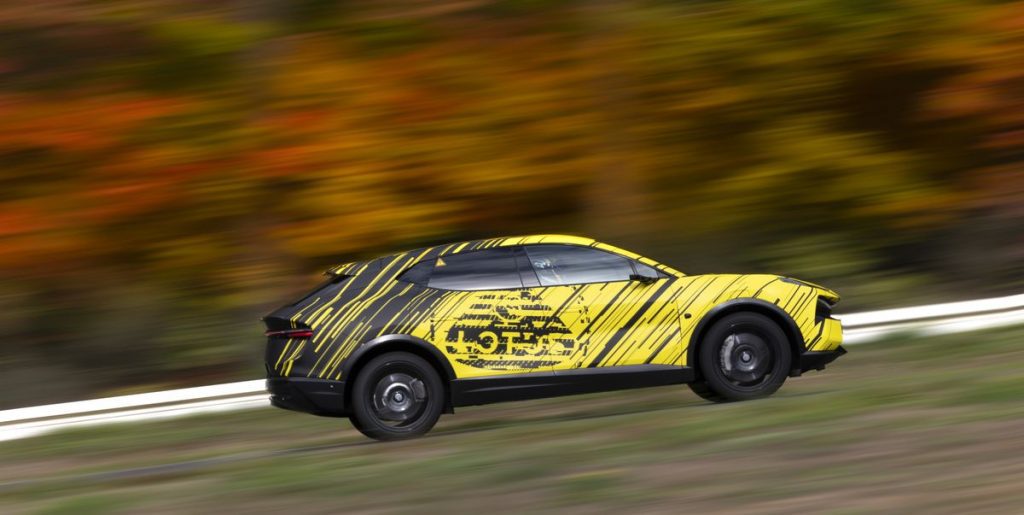Lotus Eletre Electric SUV Priced Starting under $85,000, Power up to 905 HP

Lotus has revealed more information and specs about its upcoming Eletre electric SUV, at least for the Europe market.There will be three trim levels, all with the same 112.0-kWh battery pack and all-wheel drive via twin motors and making 603 or 905 hp, depending on model.There’s no U.S. pricing for the 2024 Lotus Eletre electric SUV yet, but the range for Europe is the equivalent of $84,500 to $113,000.
When Lotus first showed its forthcoming electric SUV, the Eletre, earlier this year, its official announcement raised as many questions as it provided answers. But now we have more details, including performance details and European pricing, alongside images of the finished version.
Lotus has confirmed there will be three versions of the Eletre, with S and R versions positioned above the base car. All will use a 112.0-kWh battery pack and feature all-wheel drive through twin motors. The entry-level and S models will have a total system output of 602 horsepower and 523 pound-feet from a pair of equally powered motors, one at each end. The R swaps out the rear 301-hp motor for a much more potent 603-hp unit featuring a two-speed gearbox similar in principle to the one in the Porsche Taycan 4S and Turbo. The R’s peak output is 905 horsepower accompanied by 726 pound-feet, which Lotus claims will make it the fastest dual-motor EV SUV in the world.
None will be slow. The less powerful driveline has a claimed zero-to-62-mph time of 4.5 seconds and a top speed of 160 mph. The R drops that 62-mph figure to just 2.9 seconds and increases the top speed to 165 mph, although experiencing that even briefly will doubtless have a detrimental effect on range.
Range Estimate: Up to 373 Miles
On Europe’s generally optimistic WLTP protocol, Lotus says that the less powerful Eletre can go up to 373 miles on a full charge when running on optional 20-inch wheels; 22-inchers will actually be the standard specification in Europe. The R’s additional performance comes at the cost of a substantially worse 304-mile WLTP rating. We’ve previously been told that the Eletre will support fast charging at rates of up to 350kW.
The Eletre will be produced in Wuhan, China, with much of the development work taking place at Raunheim in Germany. All versions will have adaptive dampers and air-sprung suspension able to vary ride height, with the Eletre R adding an active anti-roll system. Carbon-ceramic brakes will also be offered on at least some versions. There is still no official word on on weight, although Lotus has confirmed to C/D that earlier reports it was chasing a “sub-two-ton [4400-pound]” curb weight were some way off from reality. We’re sticking with our prediction that it will come in around the 5500-pound mark.
Lotus has also dropped more details about the Eletre’s UI system. Like fellow Geely Group brand Smart—whose Euro-market #1 we drove last month—the Lotus will use Geely’s ECARX core architecture with mapping using data from HERE. This will use a punchy processor featuring twin Qualcomm 8155 “system on” chips and driving a high-definition 15.1-inch OLED touchscreen. We were disappointed by the unintuitive and poorly finished Smart OS system in the #1, so we hope Lotus’s take will be more successful; happily, the firm has already confirmed that the Eletre will include the Apple CarPlay and Android Auto integration the Smart lacks.
Autonomously around the Nürburgring?
The Eletre will also have lidar sensors as standard, with the company promising increasing levels of assisted driving and then higher-level autonomy “when individual market regulations allow.” The company is also promising it will ultimately be possible to “drive the Nürburgring circuit autonomously” in the Eletre, a claim we find it hard not to treat with a high level of skepticism given the corporate legal risks implicit in such a thrill ride. When it’s ready, though, sign us up!
We will have to wait longer for U.S. pricing, but Lotus has confirmed figures for major European markets. In the U.K. the range will start at the equivalent of $84,500 for the base car, rise to $98,500 for the S, and top out at $113,000 for the R. It will be interesting to see how close to that U.S. pricing ends up when the first cars reach here in 2024.
This content is imported from OpenWeb. You may be able to find the same content in another format, or you may be able to find more information, at their web site.



